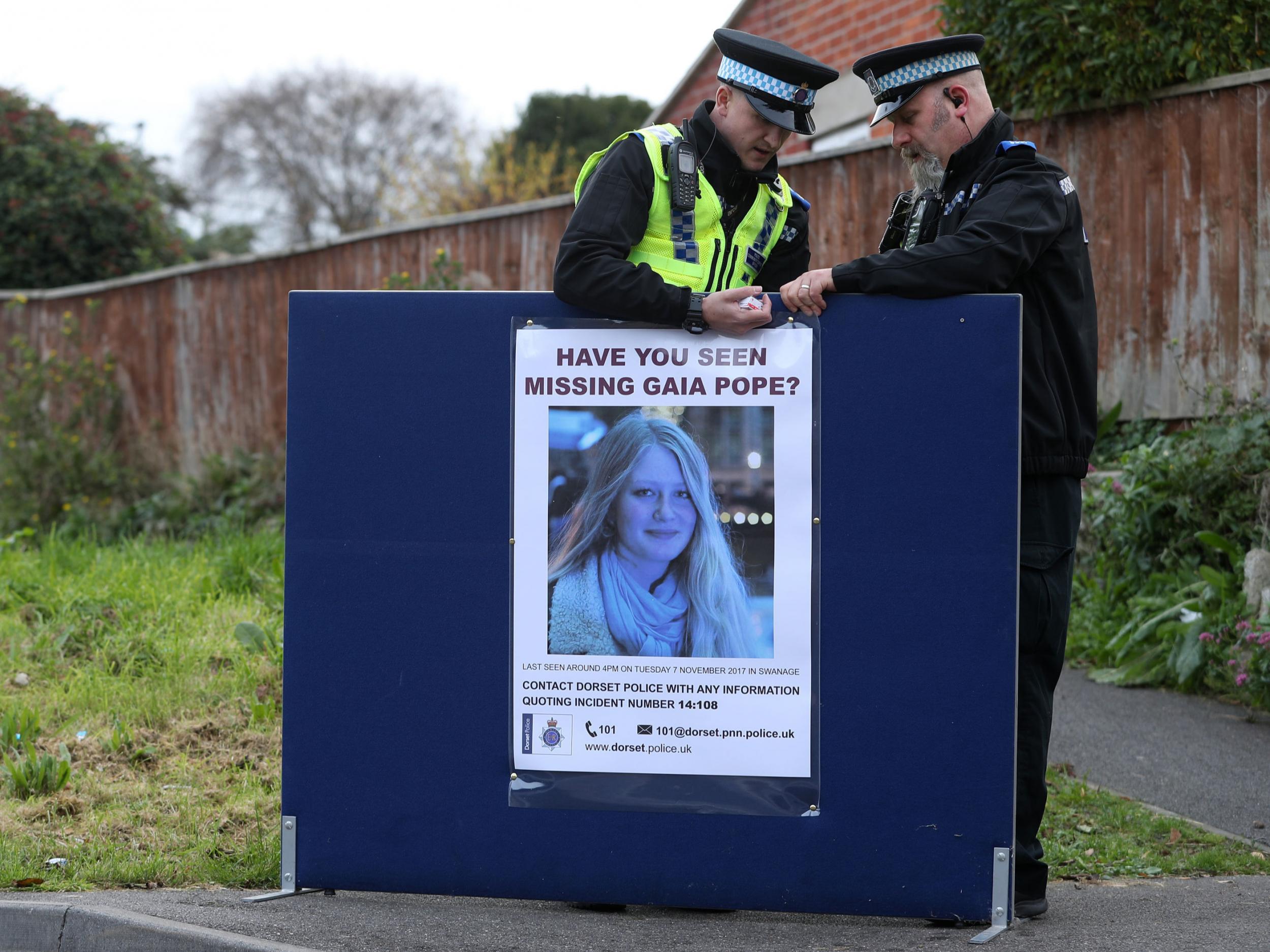
Before her body was found almost five years ago, Gaia Pope-Sutherland had feared that she was pregnant and was worried about the imminent release of a man she said had raped her – an inquest has heard.
The 19-year-old was reported missing from her home in Swanage, Dorset, on 7 November 2017 and her body was found in deep undergrowth 11 days later.
Forensic pathologist Dr Russell Delaney told the hearing at Dorset coroner’s court that Ms Pope-Sutherland’s naked body was found between Dancing Ledge and Anvil Point, on the coast of south west England.
She had died from hypothermia, and clothing found scattered across a field suggested that she had been removing the items as she was walking.
At the time of her disappearance, Ms Pope-Sutherland had recently split from her boyfriend and had become convinced she was pregnant, even though a test was negative, Dr Delaney said.
Ms Pope-Sutherland suffered from severe epilepsy and post-traumatic stress disorder (PTSD), and had been experiencing “ongoing manic episodes” since 22 October 2017, the court heard.

The teenager had left her aunt’s home at around 3.40pm and went to a friend’s where she was “behaving irrationally and began undressing,” Dr Delaney said.
Ms Pope-Sutherland got dressed again but left the property without her coat. The last known sighting of her was a few minutes later on Morrison Road.
Dr Delaney said the post-mortem examination found no signs of trauma, but there was evidence of Wischnewski spots in the lining of her stomach – a sign of hypothermia.

The court heard there were several possibilities why Ms Pope-Sutherland had undressed before her death.
The pathologist said she could have been suffering from “paradoxical undressing” – whereby she thought she was too hot and removed her clothing – or it could have been caused by her declining mental health.
“It is possible she was undressed because of her deteriorating mental health and that has made her vulnerable to hypothermia,” he said.
“The deterioration of her mental health has led to her being outside, and cold and wet, and led to her becoming more confused with hypothermia. The undressing is typical of paradoxical undressing and hypothermia.”
She also had minor cuts to her feet and shins, consistent with walking through gorse and brambles while not wearing shoes or socks.

Dr Delaney described a condition called “hide and die” where someone suffering from hypothermia burrows into a closed space.
Ms Pope-Sutherland, who used cannabis and ecstasy, was prescribed medication to treat up to five seizures a day, but Dr Delaney could not be sure she had suffered one before her death.
“I am certain that hypothermia has made a significant contribution to her death,” he said.
“It is significant to explain her death alone. It could have acted in concert with epilepsy.
“In the absence of anyone witnessing the seizure, there isn’t a way of determining to a significant degree of certainty that someone has had a seizure immediately prior to death.”
Previously, the inquest heard from research entomologist Martin Hall – who said that an examination of blow fly larvae recovered from Ms Pope-Sutherland’s body suggested that the latest she was alive was 9 November 2017.
The inquest has been adjourned until Tuesday 3 May.







